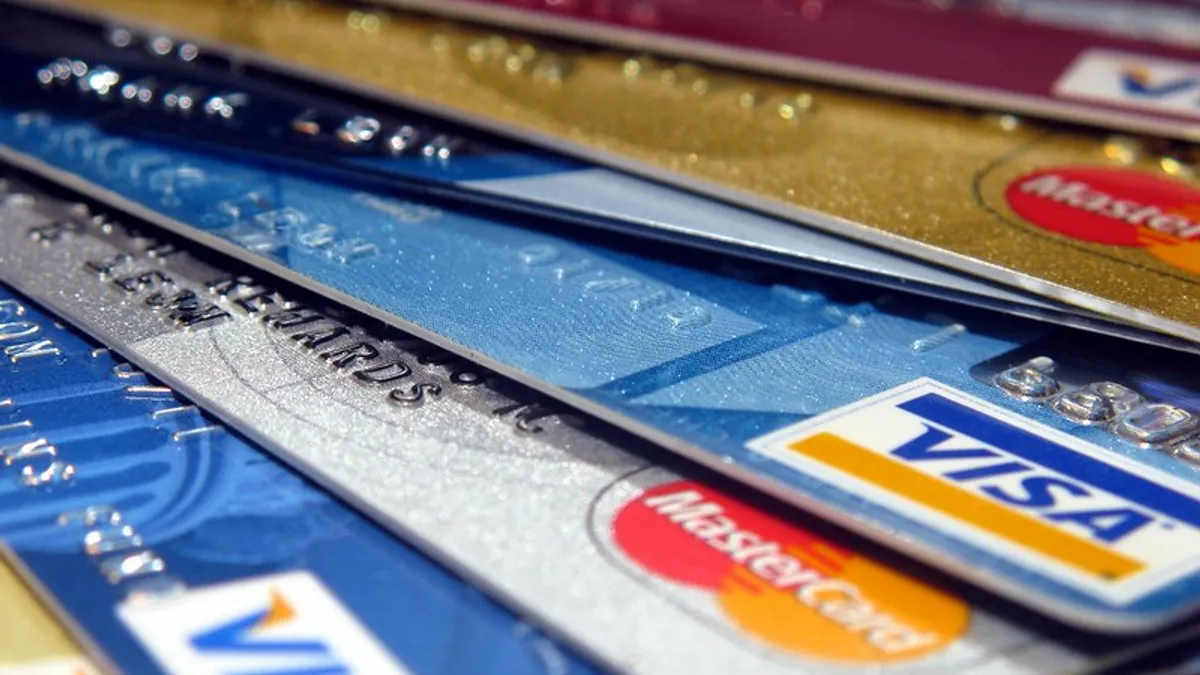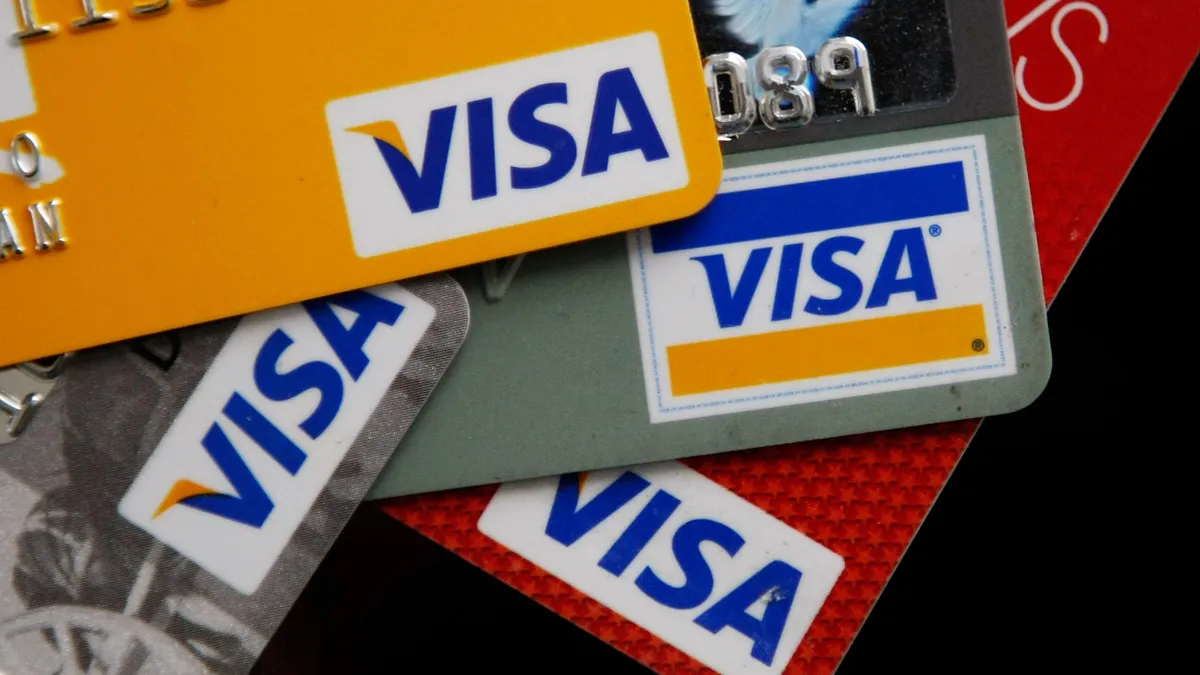As card companies begin reporting second-quarter earnings this week, they’ll benefit from a consumer spending rebound. Still, spendthrift cardholders won’t necessarily translate into a bonanza for the card networks.
The start of the COVID-19 pandemic depressed spending last year as consumers retreated to their homes in March to avoid the deadly virus, but now they're emerging, thanks to vaccines, and boosting their buying.
While that may drive revenue up, consumers have also been paying down their balances at higher rates since the start of the pandemic, cutting into interest and late payment income. Second-quarter reports from the banks earlier this month demonstrated that dual effect. Citibank, the world’s largest card issuer, saw mixed results for that business as spending on cards increased 40%, but revenue fell 11% on consumers paying off outstanding balances.
“On its June-quarter earnings conference call, JPMorgan management indicated that it expects payment rates to remain elevated through at least year-end 2021,” according to a July 16 “credit card report” from William Blair.
Of the big credit and debit card companies, Discover Financial kicks off the earnings season with a release Wednesday, followed by American Express on Friday, and their two larger rivals Visa and Mastercard scheduled to report next week.
The card network companies have already given a glimpse of results via monthly reports on U.S. sales activity through their networks and, in some cases, estimates of other forms of payments.
Purchase, New York-based Mastercard, the second-largest U.S. card network company, said this month in a press release that June U.S. retail sales growth, excluding auto and gas expense, rose 11% as spending picked up, yielding the ninth consecutive month of growth. Sales including gas expense rose even more, jumping 13.7% over last year, as prices at the pump increased, according to the release.
The June sales growth also surpassed pre-pandemic consumer spending, with an approximately 10.5% increase in each of those categories over June 2019, according to the Mastercard report. E-commerce activity gains for the month were also impressive with Mastercard reporting an 8.3% increase over last June in those online sales and a nearly doubling compared to 2019.
“While financial performance in 2020 was impacted by the pandemic which caused lower domestic and cross-border payment volumes, metrics are rebounding solidly in 2021,” the ratings agency Moody’s Investors Service said in a June report on Mastercard.
San Francisco-based Visa, the largest U.S. card company, said in a press release this month that its proprietary measure of U.S. spending momentum showed a pick-up in June over last year, but at a “slightly slower pace” than in May versus last year. The company’s gauge suggests that 53% of consumers were spending more in June than they did a year ago, with the other 47% spending about the same or less.
“Consumer spending continues to hold up well,” Visa’s Chief Economist Wayne Best said in the July 9 release. “Although there remains a lot of unevenness between regions, the (Spending Momentum Index’s) solid reading again in June reflects a continued broadening of the spending recovery across regions of the country.”
While American Express receivables increased 1.19% in May compared to last year, they were down 3.96% in April over last year, according to the July report from William Blair (June figures weren’t included). “While we acknowledge COVID-19–driven headwinds and elevated uncertainty on the duration and severity of the pandemic, we reiterate our Outperform rating,” the analysts said, suggesting the company’s fortunes will keep improving.
For Riverwoods, Illinois-based Discover, receivables declined in both months, with a 2.99% dip in May and a 5.63% drop in April, according to the William Blair report. Nonetheless, the analysts said: “We believe Discover’s credit metrics are stabilizing.”











